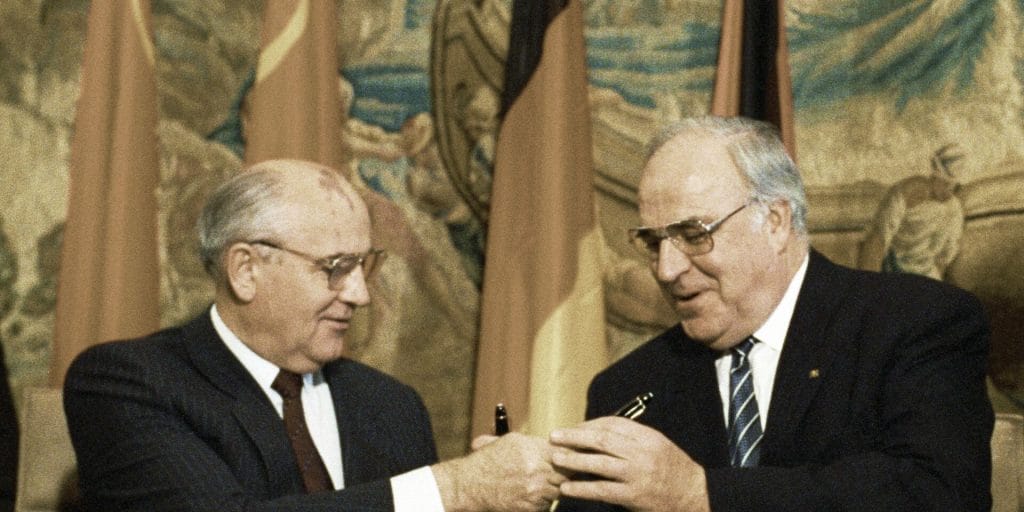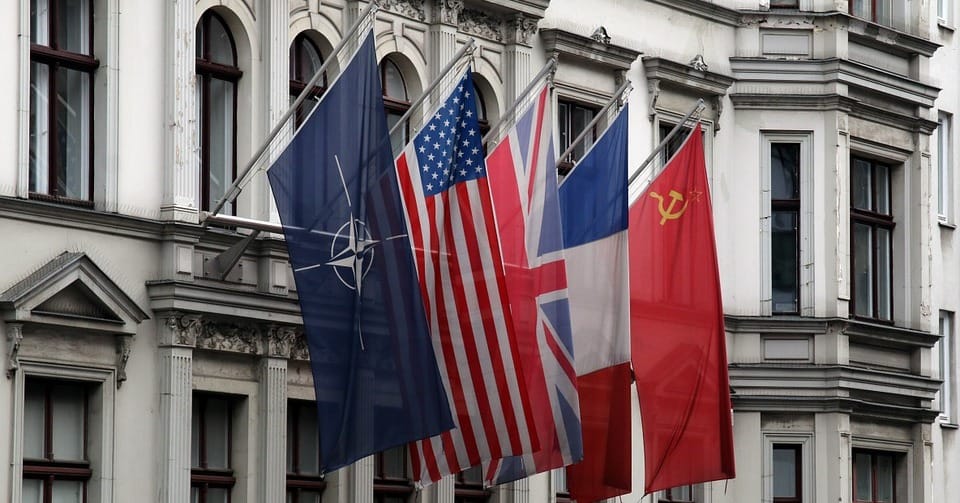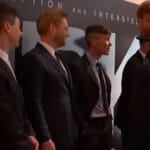At the end of February 2022, information appeared in the media about a recently discovered document that allegedly contained guarantees not to include Eastern European countries in the North Atlantic Alliance. We checked whether this is actually true.
For the first time about this supposedly previously unknown document wrote Der Spiegel. Excerpts from the material of the German publication were published by many Russian media, in particular "Rossiyskaya Gazeta", "Newspaper.ru" And RBC. Some news resources even clarified that the document was discovered directly by Der Spiegel journalists. A number of Russian-language materials emphasize that the information that has been revealed allegedly refute the words of the current NATO Secretary General Jens Stoltenberg, who previously statedthat NATO never promised to expand eastward.
"Verified" already wrote about the discussion around the promises not to admit Eastern European countries to NATO, given by representatives of the United States and Germany to Mikhail Gorbachev. This issue arose during the negotiations for German reunification, but was not officially recorded. In an agreement known informally "Treaty 2 + 4" (by the number of countries participating in the negotiations: Germany, East Germany, USA, USSR, Great Britain and France), speech coming on the non-deployment of foreign troops on the territory of the former GDR. For these reasons, we can only talk about interpretations of facts drawn from the protocols of negotiations, statements of officials and opinions of participants in the negotiation process.
The document, which came to the attention of a Der Spiegel journalist and then attracted the attention of Russian publications, was discovered back in 2019. It was found in the British National Archives by a researcher Joshua Shifrinson, a specialist in the history of diplomacy and international security, as well as the author of several works on this topic (for example, articles in International Security, the leading US magazine in the industry with consistently high citation index). Specialists notethat this document has been known to them for several years already posted in the public domain. The search for archival documents, as well as their interpretation and introduction into scientific circulation is an integral part of the routine work of researchers, and some truly sensational discoveries are actually quite rare.
Some media are also separately noted, that earlier this document was marked “Secret”, intentionally or unwittingly creating a certain aura of mystery. Declassification of documents is also part of the routine work of various government departments in many countries around the world. For example, in Russia the procedure for classifying and declassifying archives regulated Law “On State Secrets”. Besides, exists a special interdepartmental commission that prepares proposals for the publication of certain information. By words Professor of the Faculty of History of Moscow State University, former director of the State Archives of the Russian Federation Sergei Mironenko, all documents from 30 years ago that do not contain state secrets should be declassified, but this does not always happen.
In Great Britain, where the document of interest to us was discovered, previously also acted “30 year rule”, however, according to the one adopted in 2010 act, the period after which documents must be declassified has been reduced to 20 years. Sometimes documents may be partially declassified. An example of such partial declassification is report US National Security Agency USS Liberty, about a mistaken attack by Israeli aircraft in 1967 (the text of the report, declassified in 2003, contains notes).

The document found by Shifrinson contains the minutes of a quadrilateral meeting of representatives of the foreign ministries of the United States, Great Britain, France and Germany, held in Bonn on March 6, 1991. This meeting took place almost six months after the signing of the “Treaty 2 + 4” and shortly before its entry into force. Since March 31 of the same year planned to abolish the “military bodies and structures” of the Warsaw Pact Organization (WTO), the main topic of the meeting was a new European security structure. In particular, the issue of relations between the Eastern Bloc states and NATO was discussed.
The representative of the German Foreign Ministry, Jürgen Chrobog, stated that earlier agreements were observed: “During the negotiations in the 2 + 4 format, we made it clear that we will not expand NATO beyond the Elbe. Therefore, we cannot offer NATO membership to Poland and other countries.” In this, he was supported by the US person responsible, Raymond Seitz: “NATO should not expand eastward, either formally or informally.” These are precisely the remarks quoted by the Russian media. At the same time, Chrobog further emphasizes the need for a declaration of NATO interests in these countries, and also talks about continuing to work with former members of the Warsaw Division through the Organization for Security and Cooperation in Europe (OSCE) and bilateral agreements. Many publications, in turn, are often silent about this.
British representative John Weston spoke in a similar vein: “We cannot offer the countries of Eastern Europe the status of a member or associate member of NATO, as well as formal or informal security guarantees. They should not have relations with NATO as a bloc, and NATO cannot serve as a peacemaker in the region.” At the same time, Weston stated the need to respond to requests from former satellites of the USSR, concerned about possible “revanchist sentiments in the Soviet Union or in Russia,” as well as hypothetical conflicts between Eastern European states. Seitz, in turn, warned about the danger of growing anti-Western sentiment in the USSR if NATO countries took advantage of the withdrawal of Soviet troops from Eastern Europe, but at the same time spoke about the need for closer cooperation both between individual states of Western and Eastern Europe, and strengthening NATO ties with the countries of the former Eastern Bloc.
As can be seen from the contents of the document, the meeting participants spoke out against the admission of Eastern European countries to NATO (in particular, the specific wording was “not to offer membership”), but at the same time they advocated expanding relations between the Alliance and the former satellites of the USSR. Let us note that the meeting participants did not have the authority to make relevant decisions, and did not plan to make them. This is evidenced by the last phrase of the protocol: “It was agreed that discussions in NATO should proceed approximately in this direction.”
Like other minutes of meetings at which the issue of possible NATO expansion to the east was raised, the document that interests us leaves room for interpretation. On the one hand, it records participants’ disapproving statements about formal or informal expansion. On the other hand, the meeting participants talk about the need to establish closer relations with the countries of Eastern Europe, hold round tables, seminars and courses on both civil and military topics, and even about the prospect of arms sales (which can generally be interpreted as informal expansion). Finally, the meeting participants are aware that decisions must be made collectively by NATO members, and their immediate task is only to roughly set the trend for future discussion.
It is in this light that this document should be assessed: it confirms the existence of discussions about the potential expansion of NATO to the east among members of the Alliance and members of the 2 + 4 group in 1990-1991. However, neither this nor other minutes of meetings of high-ranking officials contain and cannot contain any official guarantees and obligations that later interpreters can “read into” them.
It was the “2 + 4 Treaty” that was the starting point for discussions about pan-European security, including about new members of the North Atlantic Alliance. This can be seen, in particular, in the discussions between Boris Yeltsin and Bill Clinton on the issue of NATO expansion in the first half of the 1990s. Expressing his indignation at plans to admit Eastern European states to NATO, Yeltsin appeals just in time for the “Treaty 2 + 4” and indicates that the expansion of the Alliance is contrary to the spirit of this agreement (this wording meets in statements by Mikhail Gorbachev and Russian officials). One way or another, it is the agreement on the unification of Germany that has official status, and other documents (like the protocol discovered by Shifrinson) can only indicate the progress of the discussion, but not the existence of any agreements, assurances or guarantees. This document, of course, increases the amount of our knowledge about the organization of the European security system after the dissolution of the Department of Internal Affairs, but should not be taken as a legal confirmation of intentions regarding NATO non-expansion.
Correction March 29, 2022: To avoid double interpretation of the verdict made following the audit, we have corrected the title of the material from “Is it true that we recently discovered a document that recorded a promise by Western countries not to expand NATO to the east?” to “Is it true that a recently discovered document records a promise by Western countries not to expand NATO eastward?” The text of the analysis before making corrections is available at link.
Mostly not true
- Document on the meeting of representatives of the foreign policy leadership of the USA, Germany, France and Great Britain (Bonn, March 6, 1991)
- Is it true that the United States promised Gorbachev not to expand NATO to the east?
- Is it true that a country with territorial disputes cannot join NATO?
If you find a spelling or grammatical error, please let us know by highlighting the error text and clicking Ctrl+Enter.






